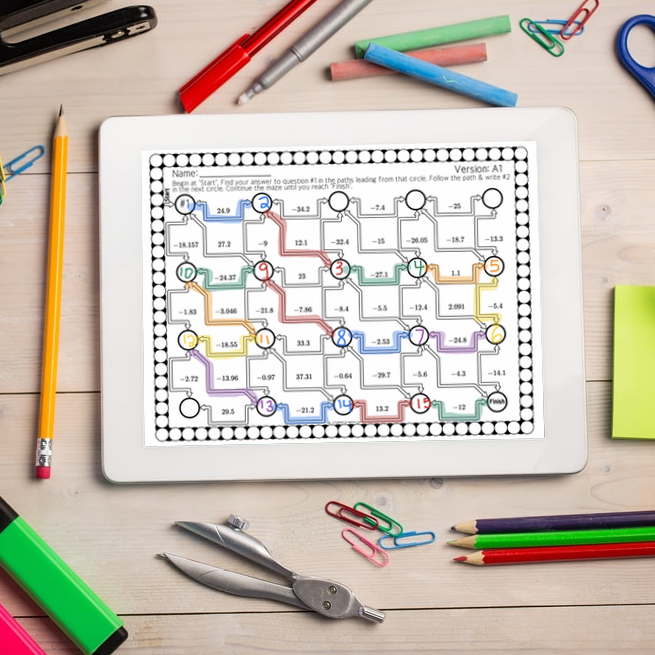Unleashing the Power of Mazes in Your Math Classroom: Engaging Students and Boosting Learning


Mazes are a fun and engaging activity that can be used in a math classroom to help students learn and retain mathematical concepts. Not only are mazes an enjoyable break from traditional classroom activities, but they can also serve as a valuable tool for promoting critical thinking and problem-solving skills in students. In this post, we will explore how mazes can be incorporated into math lessons and provide examples of how they can be used to reinforce key concepts.
One of the main benefits of using mazes in a math classroom is that they can help students develop spatial reasoning skills. In a study published in the Journal of Educational Psychology, researchers found that solving maze-like puzzles can improve students' ability to visualize spatial relationships and solve spatial problems. Additionally, mazes can help students develop problem-solving skills as they work through the puzzle to find the correct solution.
Mazes can also be used to reinforce key math concepts such as geometry, algebra, and measurement. For example, a maze can be designed to focus on geometric shapes or angles, or to require students to use algebraic equations to find the correct path through the maze. This makes mazes a versatile tool that can be tailored to suit the needs of different math classes and levels.
Another benefit of using mazes in a math classroom is that they can promote retrieval practice, which has been shown to improve long-term retention of information. Retrieval practice involves recalling information from memory, which strengthens neural connections and makes it easier to recall the information in the future. By incorporating mazes into math lessons, students are given the opportunity to practice recalling and applying mathematical concepts, which can help them retain the information over time.
To incorporate mazes into your math lessons, you can create your own mazes or find pre-made ones online. Qwizy offers a multitude of mazes for all grade levels to choose from, all of which include 5 different questions sets and a total of 25 different maze paths to follow. This means whether you are teaching elementary math or AP Calculus, you have the option to buy premade maze sets from our TPT store that will engage your students and allow you to differentiate their learning.
In conclusion, mazes are an effective and engaging tool for teaching math concepts and promoting critical thinking and problem-solving skills in students. Whether used as a break from traditional classroom activities or as a means of reinforcing key concepts, mazes can help students develop spatial reasoning skills, improve problem-solving abilities, and promote long-term retention of information. So why not give mazes a try in your math classroom today?
Sources: